Subjects:
- Preface
- Signals from the resolver
- Resolver components
Preface:
For the operation of the synchronous electric motor it is essential that the correct coils are run through the reverse are controlled. To determine which coil (U, V or W) to energize, the inverter ECU reads the position of the rotor, which is measured by the rotor position sensor, also known as the “resolver”.
The resolver consists of an outer ring with a number of coils on the inside and a rotating eccentric plate. The distance between the eccentric plate and the coils is constantly changing as it rotates.
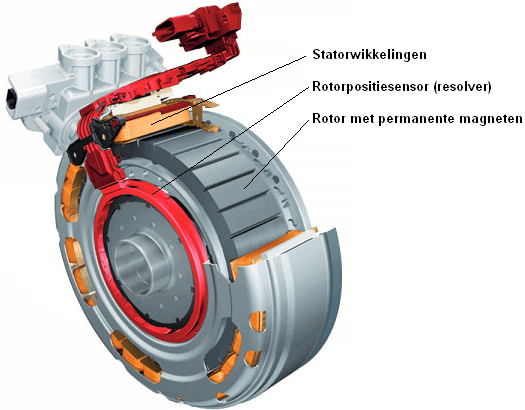
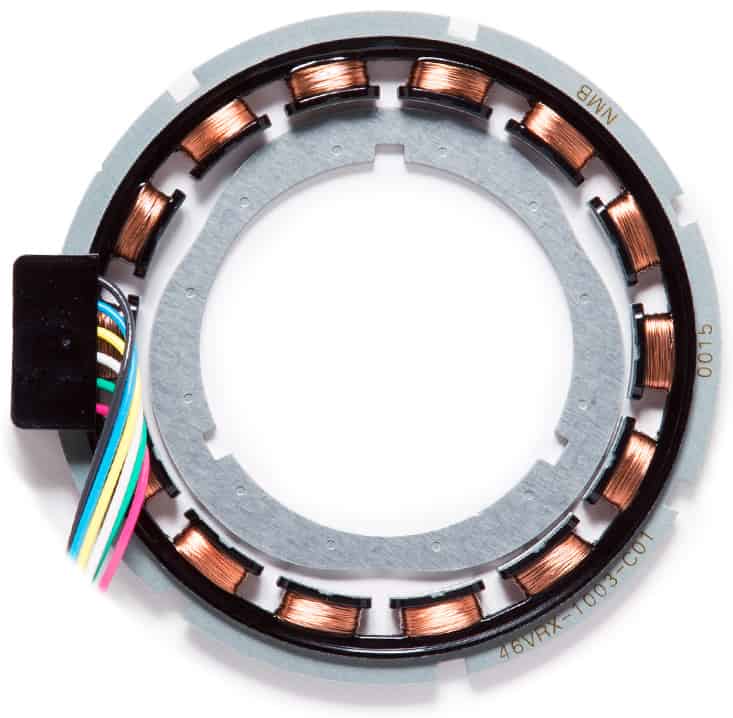
Signals from the resolver:
The ECU provides the resolver with a reference signal. The air gap between a coil and the eccentric creates a high or low sinusoidal AC voltage. At a high amplitude in the red or green sinusoidal signal (see the figure below), the air gap between the eccentric and the coil is small.
The resolver functions both when the electric motor is stationary and when the electric motor is running: in both cases the ECU needs to know the position of the rotor.
The figure below shows the theoretical signals. In reality, the frequency is much higher, so the variation in the amplitude of the sine and cosine signals is clearly visible.
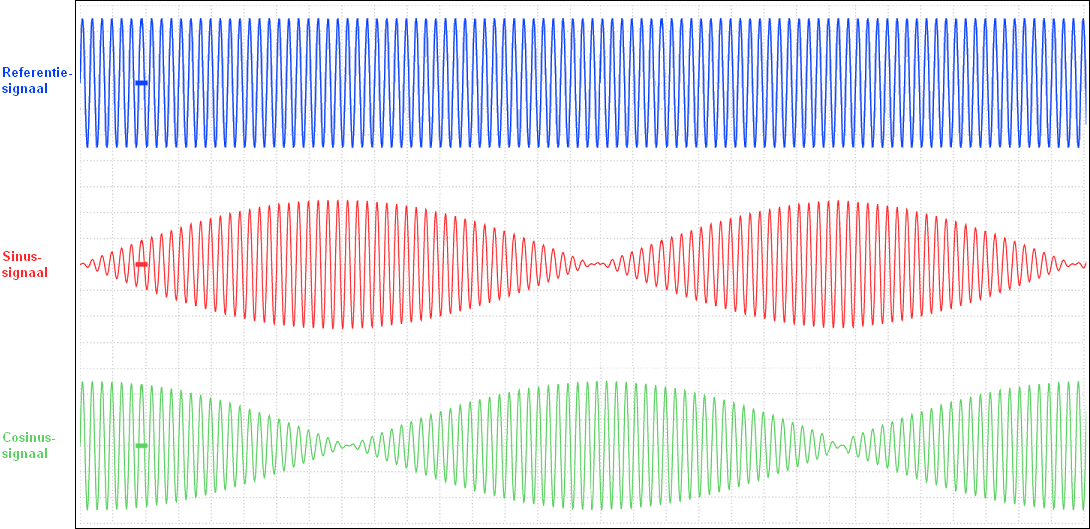
The two images below show an actual reading on a resolver. Here too we see the reference signal at the top, and the sine and cosine signals below. The first image is at a standstill: the electric motor is not running. The height of the sine signal and the cosine signal remains constant. Based on the height of this alternating voltage, the ECU knows where the rotor is at a standstill.

In the next two images, the time per division has been reduced. The frequency of the reference signal on the resolver is unchanged, but measured over a longer period of time in the measurement. As a result, we clearly see the amplitudes of the sine and cosine signals change. The first image was measured at a low rotor speed and the second at an increased speed. With increasing speed, the frequency of the sine and cosine signals increases (more signals per unit of time), but the amplitude (the height of the alternating voltage) remains constant.


Components of the resolver:
The resolver of the VW E-Golf contains 30 coils connected in series. Each coil in the resolver consists of a soft-iron core with three different windings: primary, secondary 1 and secondary 2.
The primary coil (blue) is supplied with a high-frequency alternating voltage.
The number of secondary turns (1 red, 2 green) is different on each coil.
When the cam of the eccentric plate moves along the coil, the inductance in the secondary turns is amplified. Due to the number of turns of the secondary windings 1 and 2 in each coil, this also results in the different voltages in the secondary windings. The ECU in the inverter can calculate the position of the rotor based on the voltages of secondary windings 1 and 2.
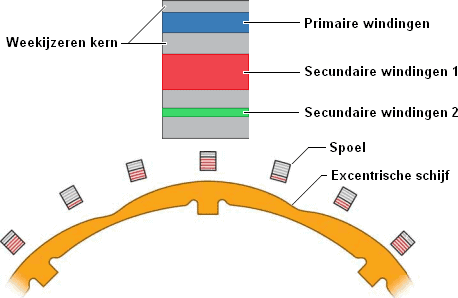
The setting of the resolver on the rotor is very precise: many manufacturers prescribe that the complete electric motor must be replaced in the event of problems with the resolver. After (accidental) disassembling of the resolver, or loosening the bolts on the outside of the electric motor housing, the resolver can no longer be reassembled correctly. In that case too, many manufacturers prescribe to replace the electric motor.
The exact rotor position of a synchronous motor must be known when stationary and while driving. When the sensor is defective, the vehicle can no longer drive.
Van de asynchronous motor on the other hand, no monitoring of the rotor position is required. The rotor position sensor emits four pulses per rotor revolution. This measurement monitors the maximum amount of slip between the rotating magnetic field between the stator and the rotor. The Hall sensor is often used as a sensor. The Hall sensor passes pulses to the ECU when the rotor rotates, but cannot take a measurement while stationary, unlike the resolver of the synchronous motor. Also, manufacturers sometimes choose to use the synchronous motor resolver as a rotor position sensor.
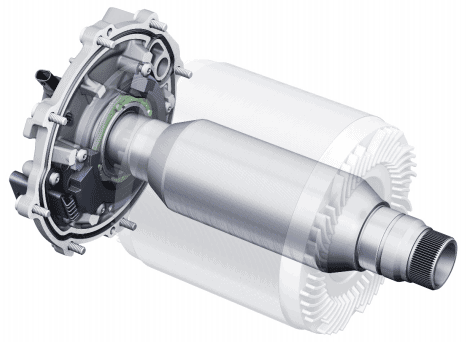
Related pages:
